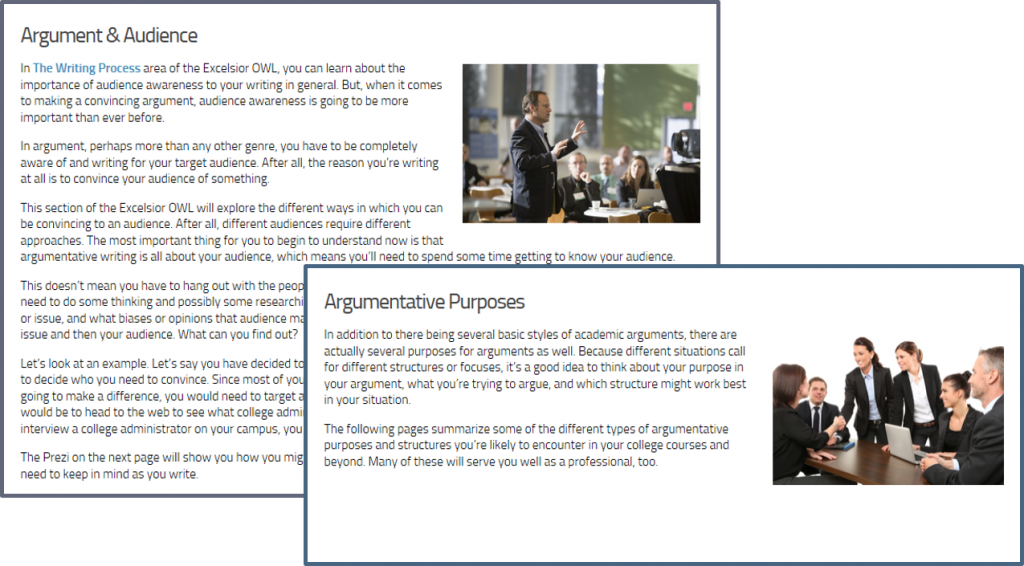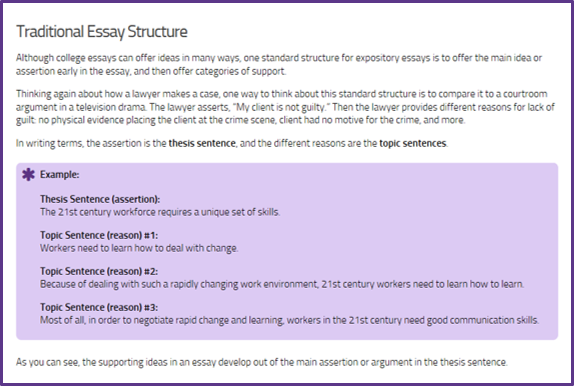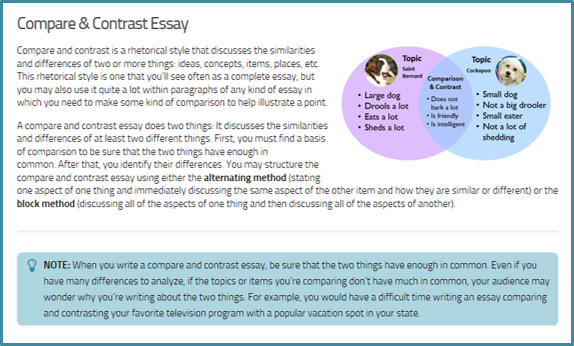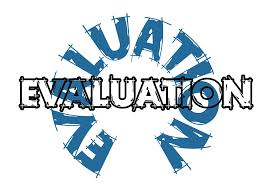Compare and Contrast Essay: Beyond Similarities and Differences
By Jason Brown
When students end up in my Freshmen Composition course, I find that many of them come in with the expectation that I will tell them what to write (in terms of a topic) and show them how to write it (in terms of a structure), and then they will compose it and I will grade it. This is always alarming to me because it illustrates some preconditioning where they expect this is the norm. But my bigger concern always rests with the fact that they have not been taught anything about writing with attention to purpose and audience. With the expectation that I will do half of the “dirty work,” purpose, for them, only goes as far as pleasing me to get a good grade and, in their minds, the only audience they need to consider is me. And this is where I attempt to demonstrate that purpose and audience are, in fact, everything they should be focused on if one is to write at a college level, that those two terms are integral if one wants to be a critical thinker.


The process of discovering how and why purpose and audience are important often begins with a discussion of the five paragraph essay, a canned structure most, if not all, are familiar with in their prior educations. We delve into its merits and downsides, and we arrive at a point where they can see why and where it has its limitations when it comes to purpose and audience, or, frankly, why they are nonfactors in such a formalized style like the five-paragraph essay. This is all the more the case if the topic has also been defined by the instructor. Soon after this discussion, my students transition into a unit on personal essay writing and write responses to a few freewriting prompts where I stress the importance of having a real purpose in mind. That is, if one is composing a personal essay, make sure that you capture a sense of what you want your audience to understand about your experience. Is the essay teaching a lesson about how not to make the same mistake(s) the writer did? Is the essay showing how the writer overcame some period(s) of adversity? Perhaps the purpose is as simple as just trying to elicit an emotional understanding from the audience. Surely each author’s purpose will vary depending on the moment(s) the author is trying to capture in a personal essay. No matter, my students are able to put into practice the concept that college level writing demands an understanding of what your audience will need and, in turn, that doing so often shapes the purpose.

This knowledge is then further enriched when we move into the next unit that asks them to write a compare and contrast essay. There is a threat that all of those critical thinking skills they have just come to grasp go by the wayside given the highly structured, often basic nature of most compare and contrast essays. That is, one can write a simply structured, easily digestible compare and contrast essay in one of 2-3 formats, all while demonstrating the similarities and differences of the chosen topics (or perhaps parts of a larger topic). From their perspective, they probably assume this essay will likely write itself as the format is largely already baked in and one only needs to find similarities and differences. I imagine, for them, it comes as a great disappointment when I tell them precisely not to take such a rudimentary approach as doing so will not foster much in the way of critical thinking and is merely informational rather than evaluative. I do stress that similarities and differences are an important discovery, but I also remind them that presenting those in an “A next to B” fashion will not interest the audience (in all likelihood) and that the purpose will only serve to show the most obvious of information.
This is also where I have to be careful in what I tell them to look at on the Excelsior OWL site in the way of the “Compare & Contrast Essay” materials. I find that most of the materials lend themselves to a fairly basic approach, the same one I have just told them to shy away from. As a supplement, I often discourage them from pursuing subjects like that of the first sample essay, wherein one would find the similarities and differences between two forms of social media. In my opinion, those similarities and differences will be clear to most if they have ever used social media in any way and thus, for me, there really is no purpose nor is the audience interested if they have ever used Facebook or Twitter for more than 15 minutes. On the whole, I find that sample essay to be far too elementary for what I’m asking my students to do.


Furthermore, the topic of the first sample essay does not align with the statement offered in the “Think Before You Begin” section (only two slides prior) that promises the following under the “Audience” section: “Are you providing the reader with a new approach or knowledge about your topic?” I just outlined that, in my opinion, that sample essay does not offer “new knowledge”. In addition, the sample essay also has seven paragraphs (which is perfectly fine by me as I often encourage students to go beyond the restrictions of the five paragraph model as aforementioned), but the video preceding the sample essay suggests sticking to the five paragraph structure. In short, the “Think Before You Begin” audience section suggests picking a topic that is not commonplace; the video then suggests useful tips and approaches but insinuates one stick to an introduction, three body paragraphs, and a conclusion; and, lastly, the sample essay delves into a hackneyed topic over more than five paragraphs. For me, and I imagine my students, there is a fair amount of confusion between those three slides. In addition, they collectively suggest that one should present only similarities and differences in a compare and contrast essay.
 It is here that I have to teach my students (beyond the above mentioned OWL materials) to take a more evaluative approach where aspects like advantages and disadvantages come into play. I even suggest (though they are always able to choose their topic themselves) subjects like comparing and contrasting the colleges they applied to or perhaps those they might want to transfer to after taking courses at our two-year college. This, to me, will encourage them to go beyond the prescriptive approach that most of the OWL materials and the first sample essay demonstrate. I recommend that their purpose revolve around how and why they made the choice(s) they made when it came to deciding which college to ultimately attend or perhaps which one(s) they might transfer to in the future. Surely their audience will know nothing of that process, all the time and energy that went into making it, and which factors were of utmost importance to the author. This goes well beyond finding similarities and differences and the rigidity of the five-paragraph essay. It taps into arguably every professor’s hope that his or her students learn and demonstrate critical thinking in college level writing assignments.
It is here that I have to teach my students (beyond the above mentioned OWL materials) to take a more evaluative approach where aspects like advantages and disadvantages come into play. I even suggest (though they are always able to choose their topic themselves) subjects like comparing and contrasting the colleges they applied to or perhaps those they might want to transfer to after taking courses at our two-year college. This, to me, will encourage them to go beyond the prescriptive approach that most of the OWL materials and the first sample essay demonstrate. I recommend that their purpose revolve around how and why they made the choice(s) they made when it came to deciding which college to ultimately attend or perhaps which one(s) they might transfer to in the future. Surely their audience will know nothing of that process, all the time and energy that went into making it, and which factors were of utmost importance to the author. This goes well beyond finding similarities and differences and the rigidity of the five-paragraph essay. It taps into arguably every professor’s hope that his or her students learn and demonstrate critical thinking in college level writing assignments.
Jason Brown is an Assistant Professor of English at Herkimer Community College, in Herkimer, NY. He is also a member of the OWL Advisory Board.
